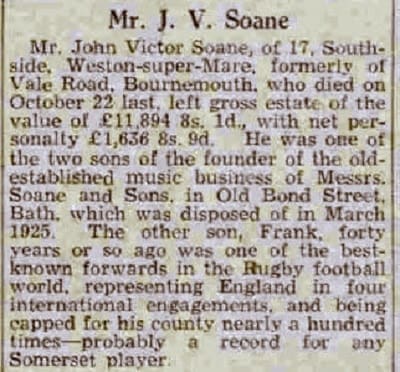Perrymead
Perrymead is a secluded hillside facing Lyncombe Vale, as a select retreat of private villas amidst large gardens and woodland. It is adjacent to Abbey Cemetery near the foot of Ralph Allen Drive.
Adjoining, but higher up Perrymead Roman Catholic cemetery was opened in 1856. The semi rural nature of the area means few houses abut the pavement should they exist as soft verges with hedges and vegetation form the boundaries in places.
As can be seen, from Thorpe’s map of 1742, the area was initially completely rural and, as the 1898 map shows, developed along with the development of Bath and Combe Down over the 150 years between the maps.
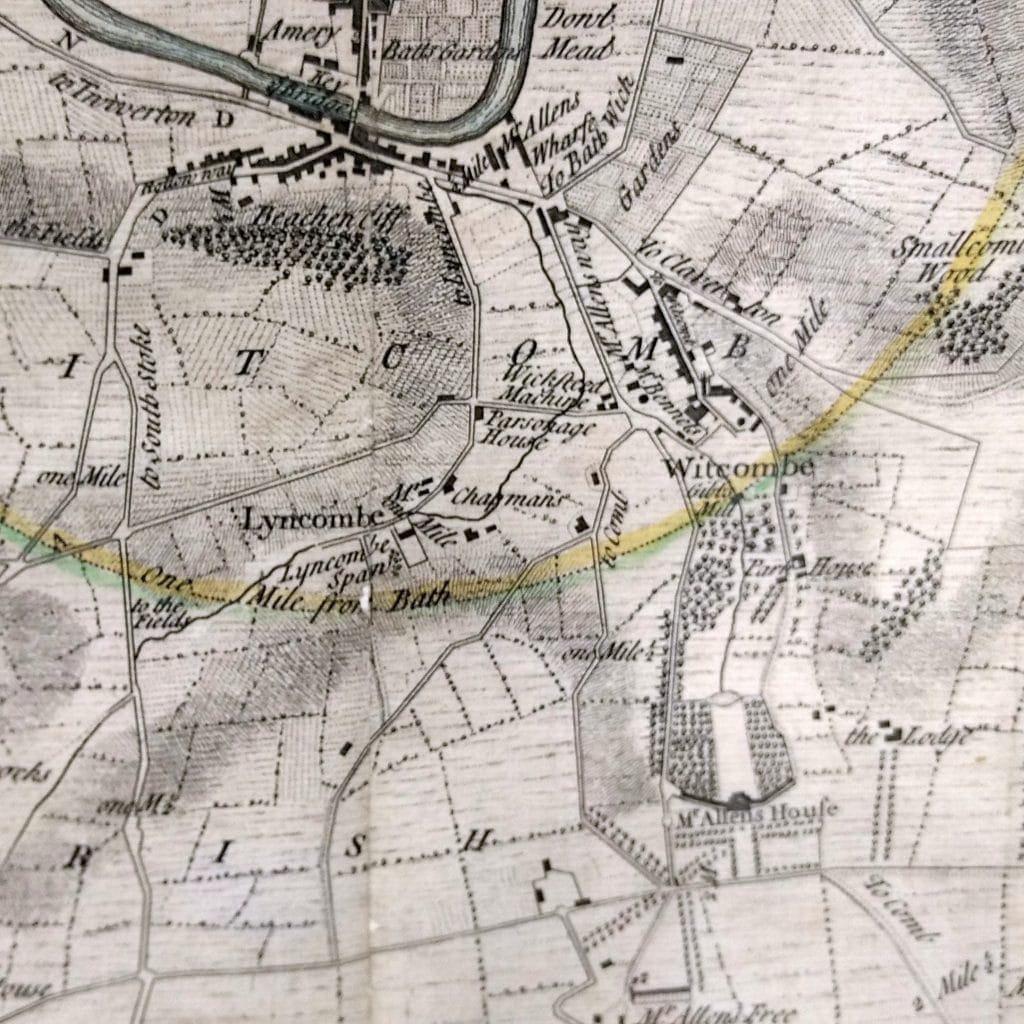
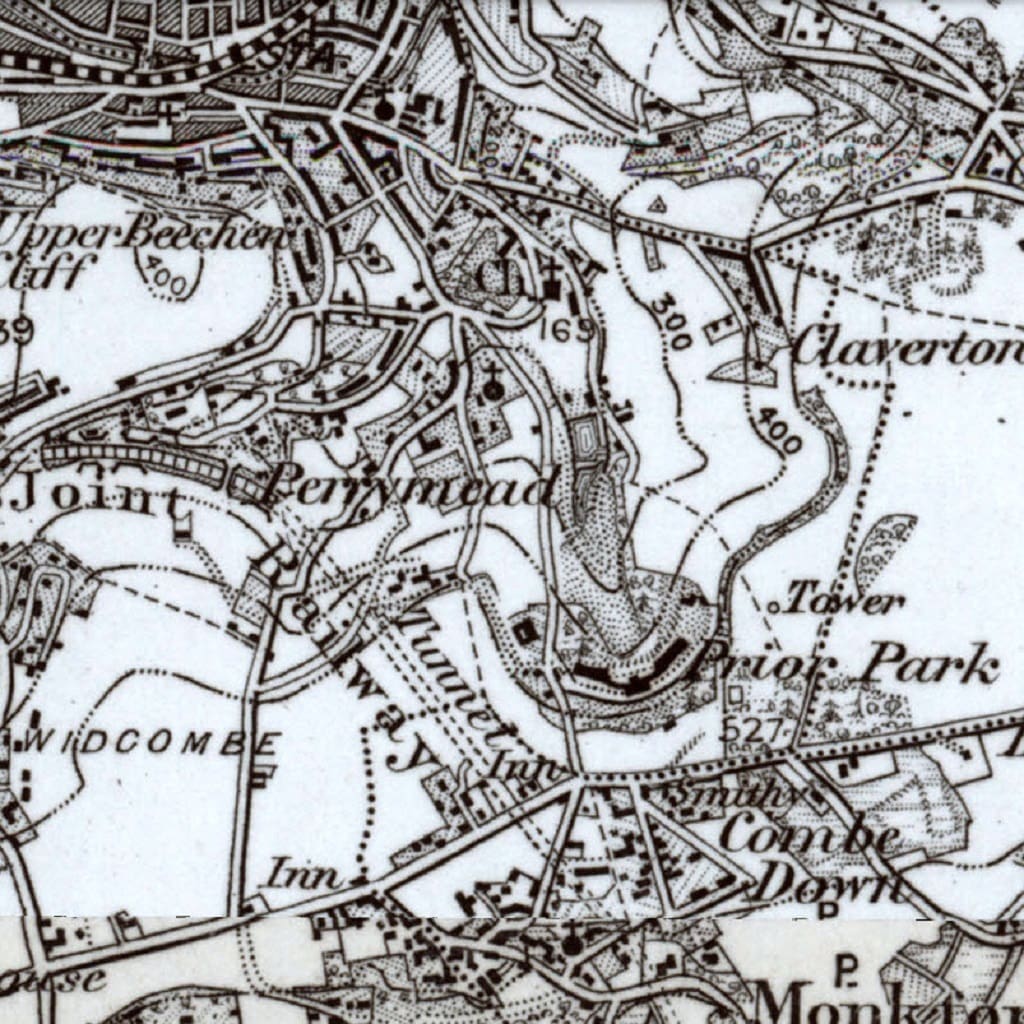
The Cloisters

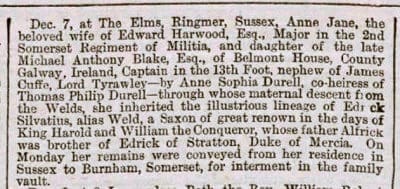
The Cloisters began the development of Perrymead as a select retreat of private villas amidst large gardens and woodland.
Thomas Macaulay Cruttwell (1777 – 1848) built The Cloisters as his home after c. 1806 and before 1823. He was was the second son of Richard Cruttwell (1747 – 1799) who owned The Bath Chronicle. The Macaulay in his name referred to Catharine Macaulay whose works Richard Cruttwell published.
At that time it was known as Perrymead Cottage. A cottage ornée in the Gothic style, it had an arcaded veranda wrapped around two sides and its own small lodge house.
By 1840 it was named Perrymead Lodge and was advertised for sale as Perrymead Lodge after Cruttwell’s death.
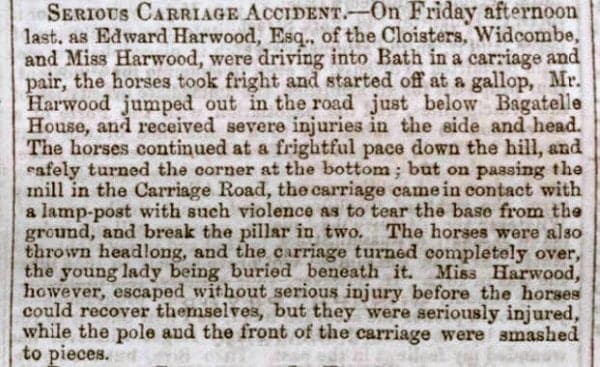
It was renamed The Cloisters by Col Edward Harwood (1807-1877) who purchased it in 1850.
Harwood’s arms are over the arched gateway, the whole of which may be an addition of that date.
His wife, Anne Jane Blake (1816-1868), was a descendant of James Cuffe (1747-1821), 1st Baron Tyrawley who had married Elizabeth Gore (1710-1788) – the Gore family have featured numerous times on this site.
It was bought in 1855 by John Townsend Kirkwood (1814 – 1902) and his wife Eleanora Elizabeth Morrison Hammett (1822 – 1861).
He was the son of Col Tobias Kirkwood (1779 – 1859) wife Catherine Amelia Coffin (1791 – 1881), niece of Adm Sir Isaac Coffin, (1759 – 1839) 1st Baronet GCH descended from Tristram Coffin, who immigrated to Massachusetts from Devon in 1642. Tobias Kirkwood served in the 40th and 64th Regiments, of Castleton, County Mayo, Ireland.
The Kirkwood family became established in western Ireland in the early 17th century, and by the early 18th century were seated at Castletown and Moyne Abbey, County Mayo. In 1770 Andrew Kirkwood (d 1810) purchased Castletown Manor in Sligo from John Knox, and was succeeded by his son Samuel Kirkwood, and he was succeeded by his brother Tobias Kirkwood. He also owned Newbridge House on the Kelston road.
John Townsend Kirkwood owned 8,345 acres in county Mayo and 444 acres in county Sligo, the Customs House at Bideford and land in the Devon parishes of Alwington, Littleham, Parkham, Beaford, Swimbridge, Hartland, Cheriton Fitzpaine and Cadeleig.
Gen Charles Dennis Dun (1787-1864) and his wife Adria Snow (1805-1876) were living at The Cloisters in 1861. Their daughter Adria Emma Dun (1824-1910) was married to Gen John Coussmaker Heath (1806-1867) who was the brother of Helen Maria Heath (1811-1834) the first wife of Rev George William Newnham (1806-1893) who was perpetual curate of Combe Down from 1842 – 1877.
The Cloisters was bought by a merchant William Allen (1822-1886) and his wife Emily Jane Bell (1840-1911) in 1869.


By 1881 it was owned by Russell Duckworth (1830-1914) and his wife Jeannette Clutterbuck (1836-1917).
Russell Duckworth’s father William Duckworth (1795-1876) bought the Orchardleigh Estate in 1855 and built the house in 1856. He bought it from the Champney family which had been settled at Orchardleigh since the Norman conquest.
After Jeannette Duckworth died Herbert William Nicholds (1878-1932), managing director of Industrial Constructions Ltd. and his wife Florence Rosina Britton (1878-1965) bought The Cloisters and it seems likely that it became separate dwellings (though Cloisters Lodge had long been the home of the gardeners) during this period.
Florence Rosina Britton’s sister was Beatrice Nellie Britton (1879-1969) was married to Rev Lucius Ferdinand Hardyman (1868-1946). His brother Dr George Hardyman (1862-1944) was married to Eglantine Henrietta Keith Maitland (1864-1930) a daughter of Gen John Maitland (1807-1881) and his wife Arabella Jane Wright (1828-1876) who had lived at Perrymead Court.
The Nichold’s daughter Olive (1903-2000) married Maj Arthur Joseph Dent Young (1892-1967) in 1926, and continued to live at The Cloisters Southside for many years. Maj Dent Young worked at Combe Down Waterworks and was the son of Jules Hyacinth Dent Young (1854-1939) who was waterworks engineer to the city for 25 years.
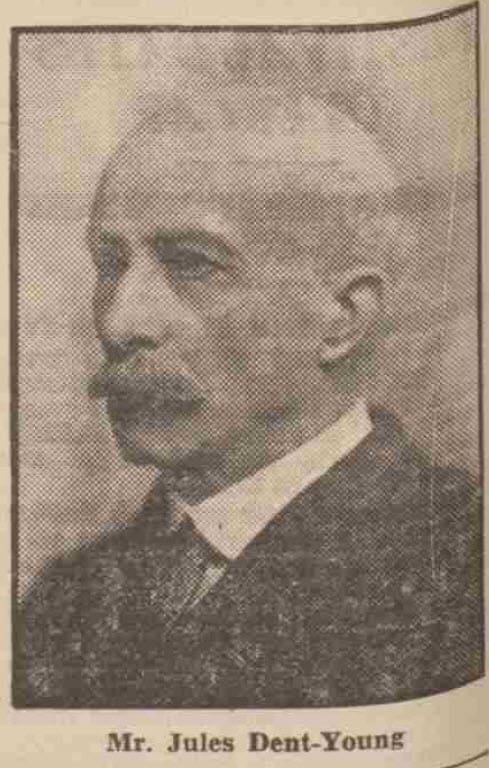
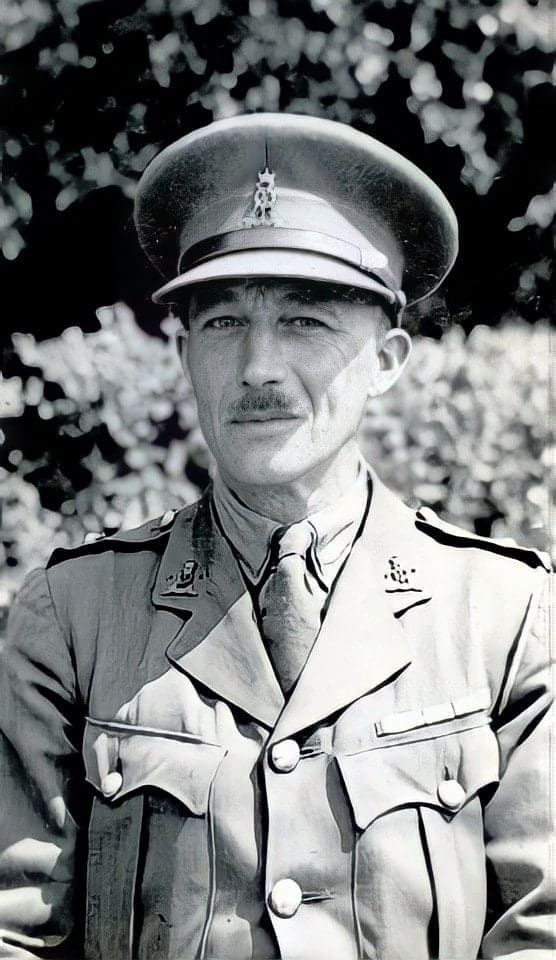
From 1927 to 1932 Rev Philip Hosken Fernandez (1854-1932) and his wife Annie Elizabeth Leighton (1856-1935) occupied The Cloisters Southside. He died of pneumonia following a sunstroke.
By 1932 John Basil Ogden (1886 – 1980) and his wife Miriam Hilda Robertshaw (1884-1971) were living at The Cloisters.
He was Bath Town Clerk but his family owned Batho, Taylor & Ogden Ltd.
BTO were millinery and drapery wholesalers with a national chain of warehouses and storage facilities, established in Manchester in the late 19th century by Thomas Batho, James Arthur Taylor and John Thomas Ogden. The business became a limited company in 1904 and remained active until at least the 1970s as part of Courtaulds.

Cloisters Lodge
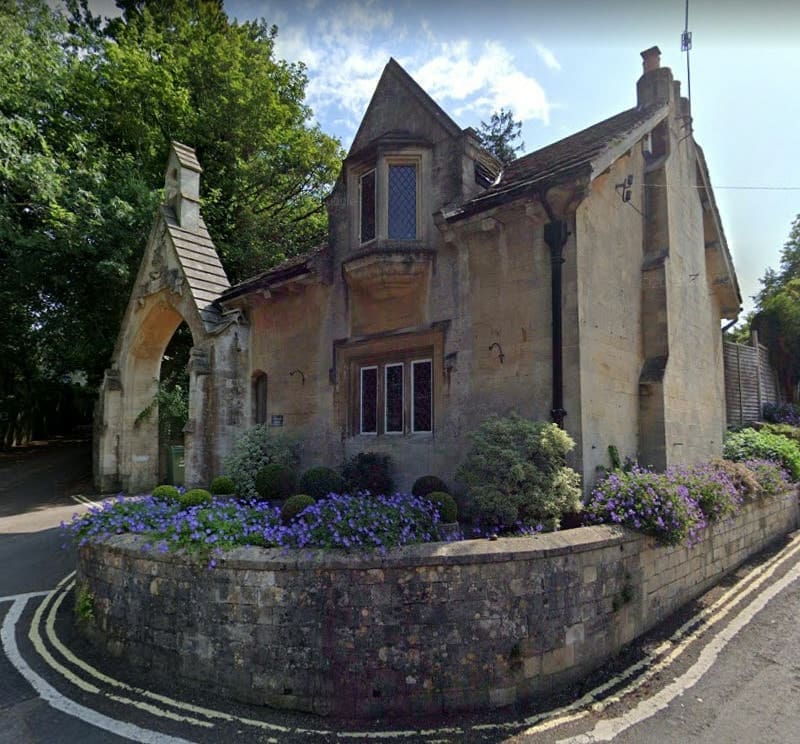
Cloisters’ Lodge seems mainly to have been used to house employees. Certainly between 1870 and 1930 or so the gardener for The Cloisters lived at the lodge.
The census and some directory entries give us this picture of occupation:
1841 Henry Long (abt 1801 – ) and his wife Maryann – (abt 1801 – ) and family.
1851 William Sheppard (1821-), stonemason and his wife Anna – (1819-).
1870, 1880 & 1884 William Carey (1844-1920), gardener and his wife Sarah Thomas (1840-1922) and family.
1890 Charles John Gray (1859-1897), gardener and his wife Annie Tapper (1859-1880) and family
1895 Harry Elton (1863 -1918), gardener and his wife Emma Willis (1864-1946) and family.
1900 George Welch (1864-1942), gardener and his wife Mary Ann Giddings (1865-1927).
1911, 1916 & 1921 Henry John Sparey (1865-1952), gardener, secretary of Bath Gardeners Debating Society (Bath Chronicle and Weekly Gazette – Saturday 5 March 1921) and his wife Anne Adlam (1863-1947) and family.
Woodbine Cottage
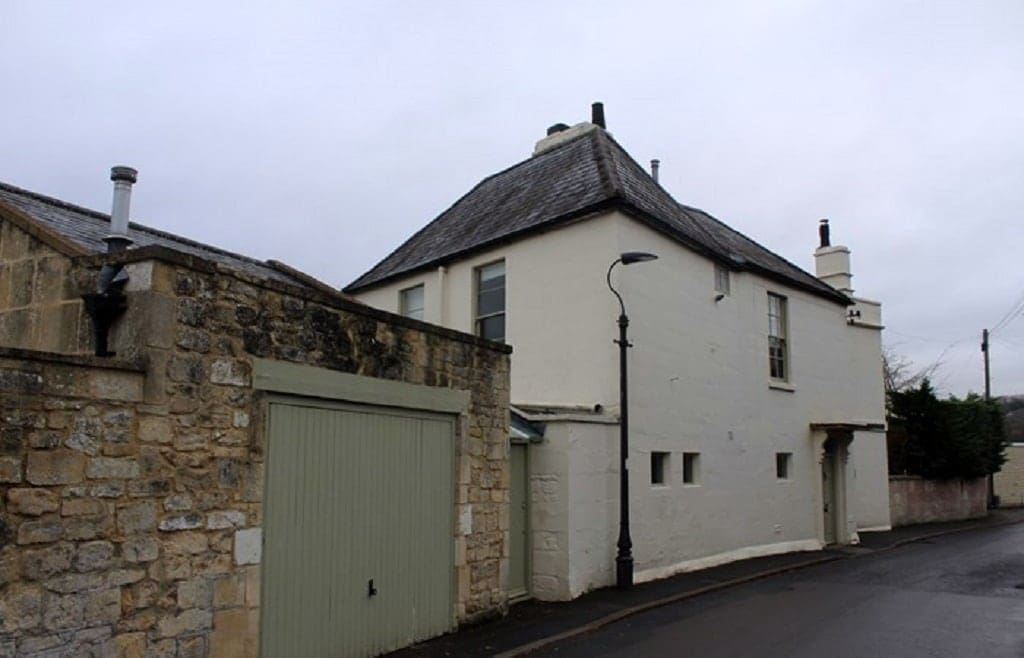
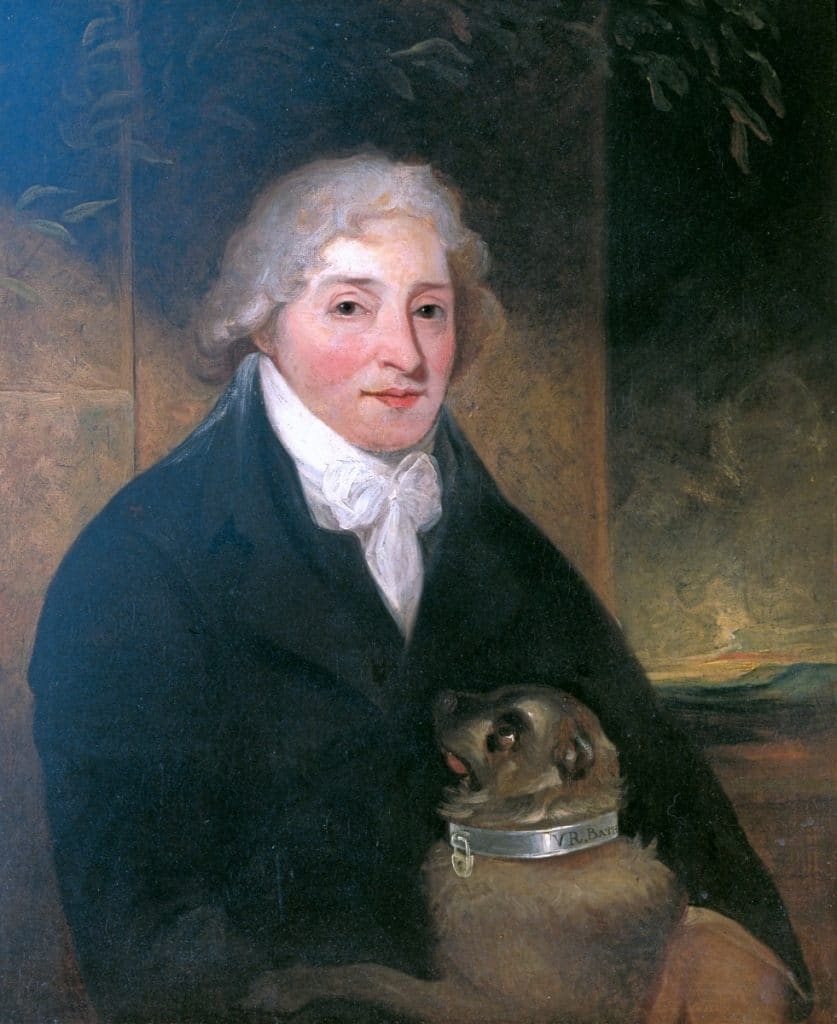
Venanzio Rauzzini (1746-1810) owned Woodbine Cottage between 1780 and 1810 as his countryside retreat, his town house was at 13 Gay Street.
He was an Italian composer, male soprano, and teacher. His début was in Rome in 1765. Mozart wrote Exsultate, jubilate for him. Rauzzini was hugely in demand and became extraordinarily rich.
Rauzzini settled in England in 1774 and wrote 5 operas for London and 5 for Munich, also chamber music and songs. He retired from the stage in 1778 and settled in Bath in 1780 and became Director of the New Assembly Room Concerts in 1781 succeeding William Herschel.
The conventional wisdom is that Rauzzini was castrato in an age when the castrati were the most revered and celebrated of singers but Raimund Herincx suggests that he was not and that his unusual voice was entirely natural. He was also a ladies’ man, a kind of ‘castrato Casanova’, sleeping his way round Europe with rich men’s wives who assumed the sex was risk-free.
Rauzzini would have been known by all the composers of his day but he was a particular friend of Franz Joseph Haydn (1732-1809) who was his guest for six weeks in 1794 and stayed at Woodbine Cottage, , even writing a song in memory of Rauzzini’s dog, Turk.
Haydn’s description of his trip in his diary gives a good account of his agreeable time in the city:
“...on August 2, 1794, I left for Bath at five in the morning and arrived at 8pm. I stayed with Mr Rauzzini, a very famous musician who was one of the greatest singers of his time. He has been living there for 19 years, supports himself with subscription concerts in the winter, and also gives lessons. He is a very good and hospitable man. His summer house, where I stayed, lies in a very lovely site on a hill that overlooks the whole city.
Bath is one of the most beautiful towns in Europe, all the houses being made of stone. The stone is quarried in the nearby hills and it is so soft that it can be cut easily into all shapes, and is very white. The longer it is out of the earth, the harder it becomes. There are many beautiful squares with the most magnificent houses. The whole town lives on a slope, and therefore there are few coaches, but there are plenty of Sedan chairs in which one can be carried a good distance for sixpence.”
After Rauzzini the occupants of Woodbine Cottage were ‘more ordinary’ and the census and some directory entries give us this picture of occupation:
1841 Henry Rickets, gardener (abt 1810 – ) and his wife Maryann – (abt 1810 – ) and family
1851 and 1861 Charles Frederick Marshall (1821-1897 ), tailor, draper and undertaker and his wife Isabella Mary Field (1812-1862) and family
1901 Ada Letitia Deane (nee Doveton) (1861-1925), widow and daughter
1911 Hannah Jenkins (nee Milsom) (1837-1908), wife of Lewis Jenkins (1841-1918) and family
Moregrove
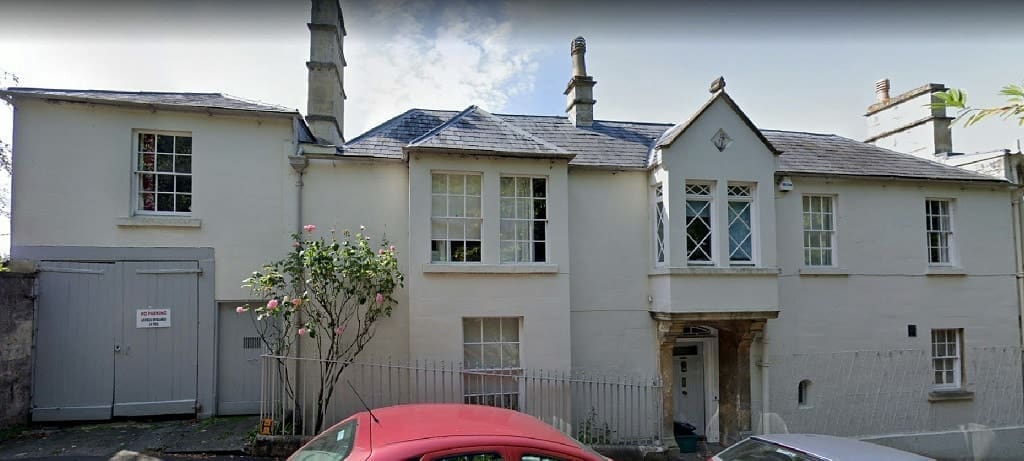
1851 Mary Jolliffe (1822- ), cook and Sarah Bright (1827- ), housemaid
In 1861 Capt Alfred Speed Williams RN (1807-1866) and his wife Pamelia Eliza Line Bird (1819-1908) and family resided.
By 1871 Isabella Mainwaring (née Byers) (1800-1872), widow of George Mainwaring (1791-1865), and family lived here. He had been in the Bengal Civil Service.
In 1881 Capt Richard Roger Western RN (1815-1885) and his wife Jessie Pearce (1826-1901) and family arrived. They were to stay until at least 1949. when Richard Walsingham Western (1865-1949) died at Moregrove.
The censuses show:
- 1891 Clara Elizabeth Western (1850-1926) and sisters
- 1891 Clara Elizabeth Western (1850-1926) and sisters
- 1901 Jessie Pearce (Western) (1826-1901) and family
- 1911 1891 Clara Elizabeth Western (1850-1926) and sisters
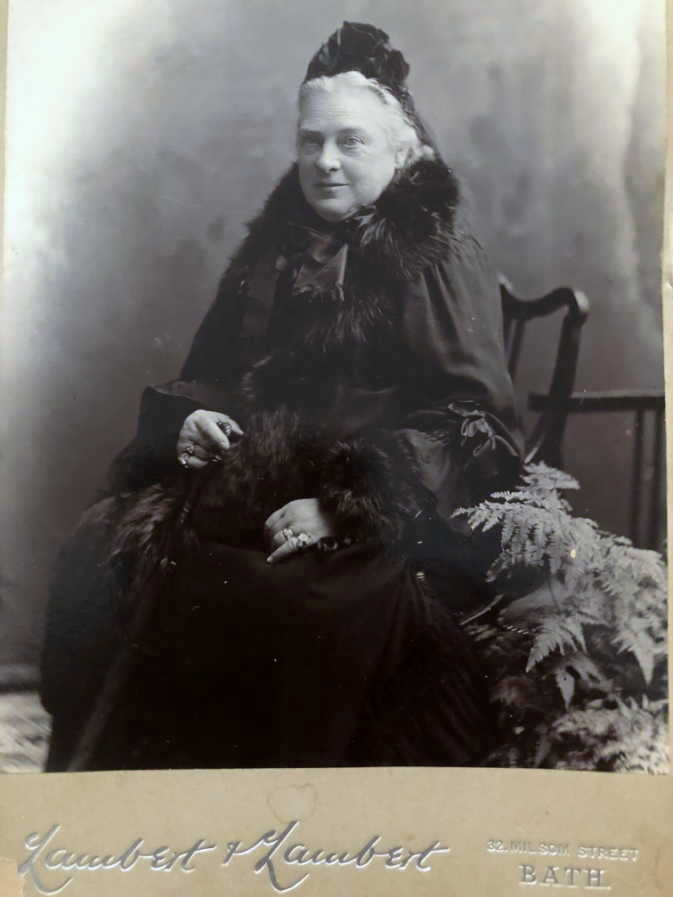

Perrymead House
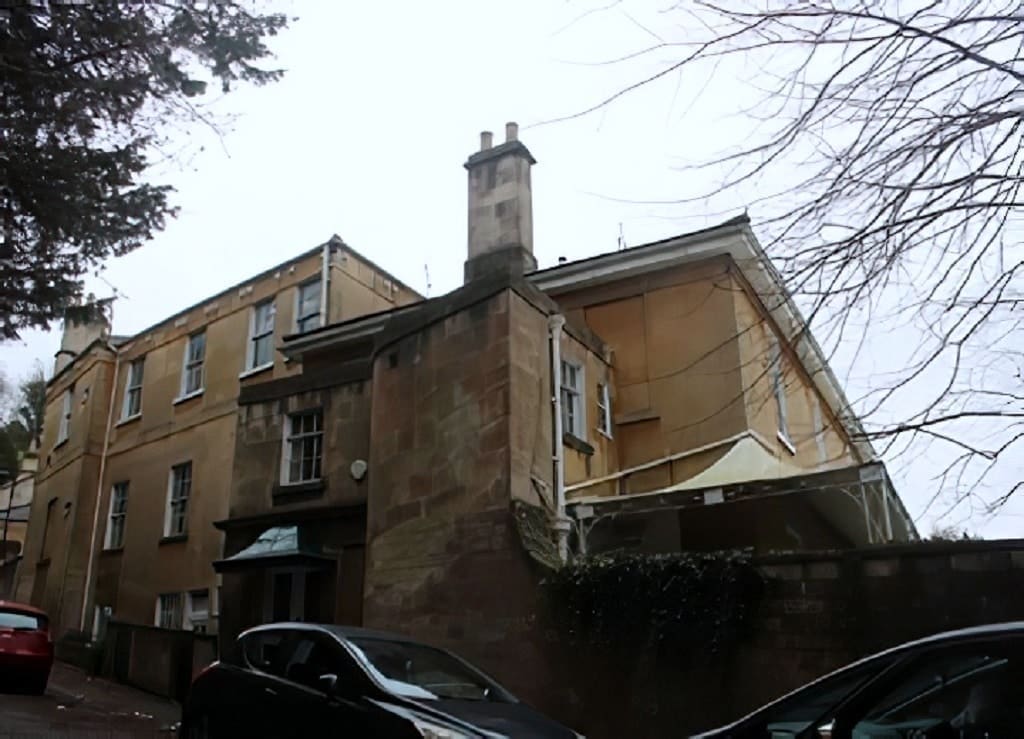
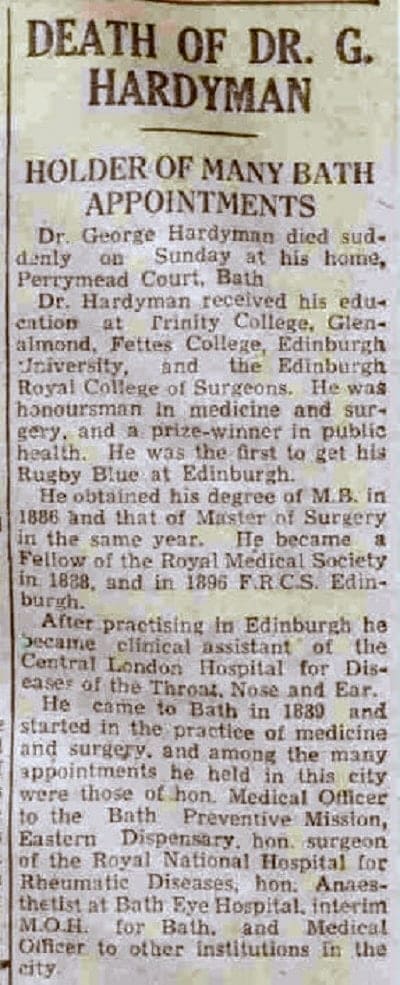
In 1851 Judith Maria Turner (1781-1856), gentlewoman was in occupation.
By 1861 Col William Charles Birch (1805-1869) and his wife Harriet Kennedy (1819-1887) and family lived here.
He was the son of Edmund John Birch (1776-1830) who was initially in partnership to make pottery with Christopher Charles Whitehead at two adjacent potteries in Hanley, but this association was dissolved in 1798 and the Birch business continued under the name of E J Birch & Co.
Birch was one of the most productive and skilled makers of black basalt, mainly for useful wares like vases, teapots, bowls and cups.
His step mother was Mary Spode (1781-1849) a grand daughter of Josiah Spode (1733- 1797) who was responsible for perfecting two factors crucial to the success of the English pottery industry:
- the technique for transfer printing in underglaze blue on fine earthenware that led to the launch in 1816 of Spode’s Blue Italian range, which has remained in production ever since, and
- the formula for fine bone china that was generally adopted by the industry.
By 1871 Gen John Maitland (1807-1881) and his wife Arabella Jane Wright (1828-1876) and family lived here.
He was a Lieutenant General in the Royal Artillery and a great grandson of Charles Maitland (1688-1744), 6th Earl of Lauderdale.
After his death his family continued to occupy the property and by 1881 Elphinstone Vans Agnew Maitland (1856-1904) and his brothers and sisters lived there.
By 1891 Edith Catherine Anne Maitland (1853-1932) and her sister Eglantine Henrietta Keith Maitland (1864-1930) – later Mrs George Hardyman – were in residence and in 1901 and 1911 Edith Catherine Anne Maitland (1853-1932).
As the Bath Chronicle cutting shows Dr George Hardyman (1862-1944) and his wife Eglantine Henrietta Keith Maitland (1864-1930) were still in residence at Perrymead Court in 1944.
The 3 surviving Maitland daughters had bought Perrymead Court in 1885, mainly because of the gardens, which brought all these Perrymead properties together.

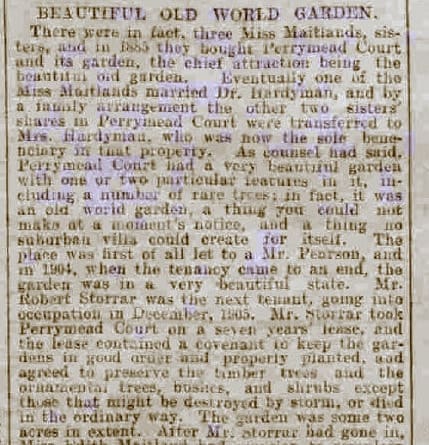
In 1939 the England and Wales Register tells us that John Henry Kemp (1881-1948, his wife Agnes Duncan Cameron (1891-1969) and son John Kenneth Cameron Kemp (1918-1993) were living at Perrymead House.
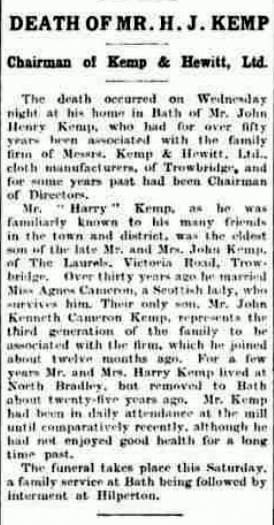
Perrymead Court

In 1851 Henry Asprey Stothert (1797-1860), engineeer and his wife Elizabeth Lum Crowther (1799-1876) and family were in residence. He was the son of George Stothert (1755-1818) and Elizabeth Asprey (1765-1855).
Elizabeth Lum Crowther remained in residence until here death.
Stothert & Pitt

Henry Asprey Stothert was responsible for starting the famous Bath firm of Stothert and Pitt, the origins of which can be traced to an ironmongery business in Bath taken over by his father in 1785.
In 1837, Henry Stothert set up an ironworks in Bristol, first as Henry Stothert & Co., then, joined by Edward Slaughter, Stothert, Slaughter & Co.
Robert Pitt became an apprentice in 1834 and in 1844 Pitt became a partner along with the managing engineer, George Rayno to become Stothert, Rayno & Pitt.
In 1852 Henry retired from Stothert, Rayno and Pitt and his share in the firm passed to his son John Lum Stothert (1829-1891).
In 1855 Rayno retired through ill-health and the firm became Stothert and Pitt. In 1883, with health of the 2 partners failing, the company was incorporated as a Limited Company with John Lum Stothert as chairman; he remained in this position until his death. In 1902 the firm became a public company.
In 1986 the firm was sold to Robert Maxwell‘s Hollis Group in 1986 which injected £4 million into the company in exchange for 77 percent of the equity. Following the collapse of Maxwell’s empire a management buy out was undertaken in 1988 but failed.
For over 250 years the heavy engineering and metalworking business employed local people (over 2,000 in 1945) and supplied a wide variety of products from bedsteads to boilers and cement mixers to cranes.
In January 1989, the firm closed its engineering works, 580 local people lost their jobs and the city of Bath lost its single largest manufacturer. The name and intellectual property became part of Clarke Chapman.
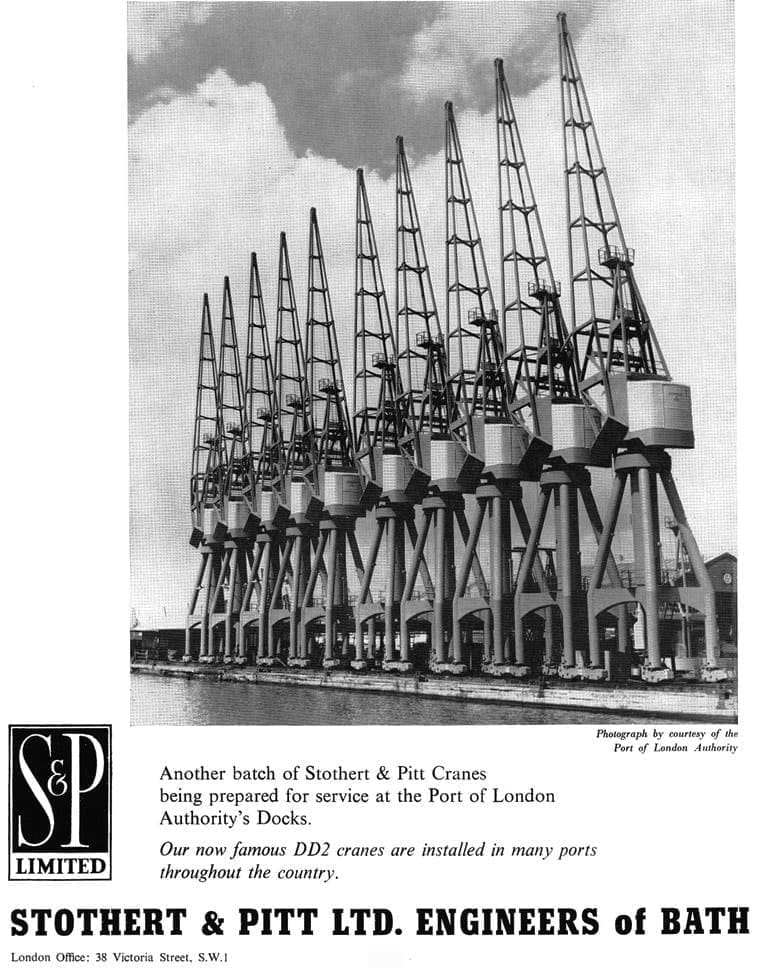

In 1881 Gen Robson Benson (1822-1894) and his 2nd wife Alice Cook (1834-19136) and family lived here.
By 1891 Charlotte Hammon (1827-1910) widow of Rev Charles Weston Devenish (1832-1870) whose family owned J A Devenish and Co brewery was in residence.
In 1904 Capt Frederick St Leger Luscombe CB RN (1858-1904) lived here.
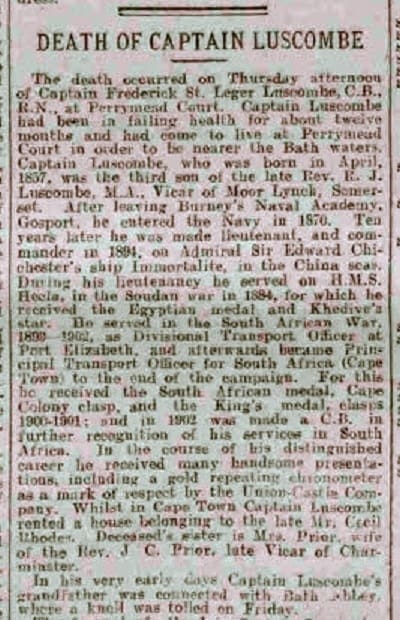
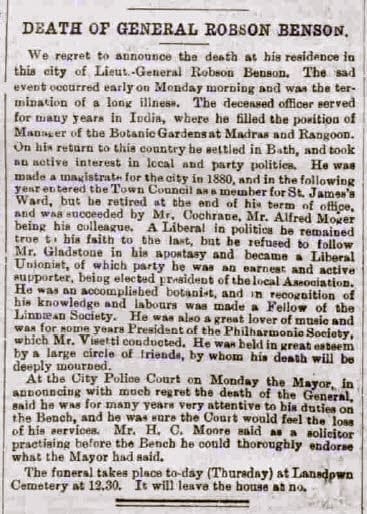
In 1908 the house was occupied by Robert Storrar (1824-1908), a retired estate agent, and his wife Helen Jane Gale (1837-1915), who took a 7 year lease.

Perrymead Lodge
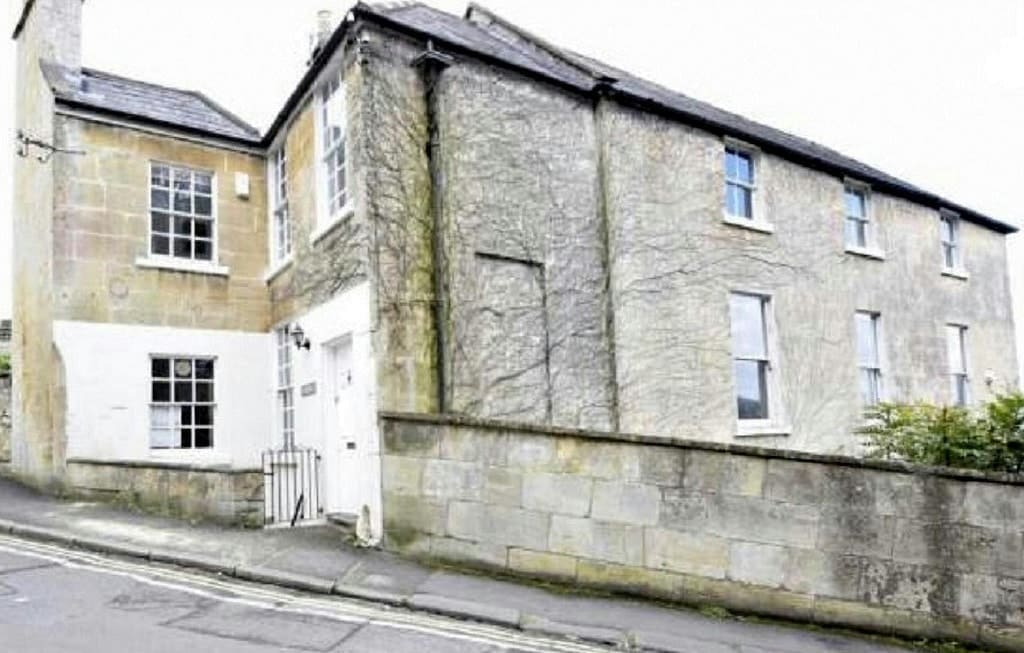

In 1861 Perrymead Lodge was occupied by Rev Gervase Rainey Pennington (1836-1882) and his wife Louisa Ridge Nicholl (1837-1923) and family.
By 1871 Mary Cruttwell (1806-1876) daughter of Thomas Macaulay Cruttwell (1776-1848) was in residence.
In 1881, 1891 and 1901 Thomas Jeeves (1812-1903), a retired stockbroker and his wife Emily Mary Maynard (1835-1917) were living here.
By 1911 John Victor Soane (1866-1940), son of James William Soane (1833-1912) of West Brow, and his wife Eleanor Mary Burton (1879-1953) and family occupied Perrymead Lodge.
In 1926 Harry Watson (1861-1926) was the occupant.
In 1927 a Mrs Musgrave was in occupation but by 1935 David Anthony Keith Murray (1900-1968), a descendant of 2nd Earl of Hopetoun, and his wife Nancy May Gautchi (1908-2008) lived here and by 1946 it was Leopold Gabriel Berman (1861-1943), a bookseller.
